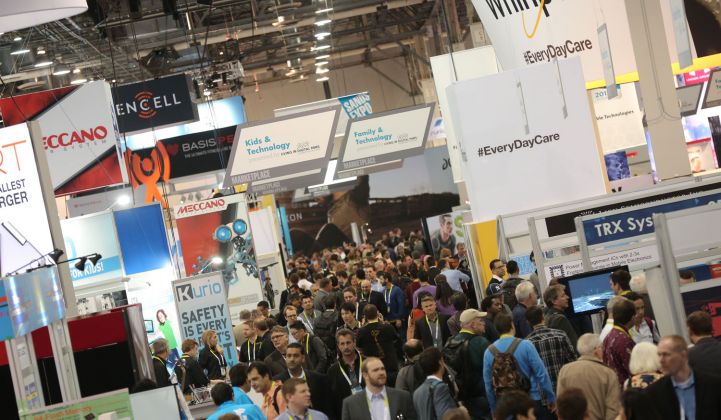Amidst the bedazzled wearable tech and the gamified toothbrushes, the intelligent, connected house was a top draw at this year’s International Consumer Electronic Show in Las Vegas.
The evolution of the past few years has brought smart home technologies from the wealthy fringe to stuff that people are already buying, and not just playing with on the show floor of CES.
Energy use in the smart home is more embedded into the entire package than ever before. That’s good news, because energy geeks don't make up most of the mass market.
Alarm.com took home the CEA’s Mark of Excellence Award for its geo-services technology, which allows its smart thermostats to automatically adjust based on whether or not the smartphones belonging to the home's residents are within close proximity. (Tough luck if the dog doesn’t have an iPhone yet.)
"Automation is evolving from working simply on command to [working] effortlessly on your behalf, where the home responds to the homeowner's normal routines and activities,” Jay Kenny, Alarm.com's VP of marketing, said while accepting the award.
Alarm.com also released its latest thermostat at the filled-to-capacity trade show. The new smart thermostat communicates with sensors placed around the home, so the temperature level is not just dictated by the room where the thermostat is mounted.
Renewed focus on ease of use and seamless integration
Effortless automation seemed to be the theme this year among exhibitors in the smart home space.
Large white-goods manufacturers continued to tout their newest lines of appliances, complete with connectivity capabilities that rank somewhere between useful and creepy. LG’s HomeChat, for instance, will allow you to tell your appliances when you’re going on vacation to help save money.
Not to be outdone, Whirlpool’s appliances will be able to integrate with Nest’s Rush Hour Rewards utility program, so that a homeowner's dryer or hot water heater may be able to save some money on hot days when energy is in high demand.
GE’s GeoSpring hot water heater is the first of the company's connected appliances; it boasts a vacation mode that can be used to save energy and a Wi-Fi connection that could allow the units to be tapped for grid services in the future.
The winner of best of innovations in home appliances, however, went to Zalman USA’s Z-Air, a ceiling fan with concealed blades that also incorporates air purification and LED lights. It’s probably extremely efficient, but that’s not why it won. In fact, efficiency in new products is more of an expected feature rather than a highlight.
The award for best of innovations for smart home went to Sengled for its indoor/outdoor LED light that comes with an HD camera, microphone and speaker. If an LED with a video camera isn’t for you, the company offers other LEDs with features such as Wi-Fi boosters or wireless speakers.
The smart home sphere can’t get away from various vendors offering expanded ecosystems and platforms, as companies vie to be the chosen control layer in the home.
One company that’s trying to help other companies get their devices connected to the platforms that matter is Ayla Networks, which allows device manufacturers to leverage their software and expertise to connect those devices to the cloud and then to an application. The company is hooking up everything from Owlet Smart Socks for babies to Johnson Controls’ York Wi-Fi thermostat.
Nest announced an expanded list of devices on its platform, and Belkin’s WeMo system showed off a growing line of connected lighting.
The rush to get connected devices to market, and into ecosystems that matter, is just heating up in 2015. CES is the kickoff point, but the space will only grow more convoluted and busier throughout the year. Parks Associates estimates that the sale of smart home devices will nearly double over the next few years, increasing from 20 million at the end of last year to 36 million units by 2017.
By the time next year's CES rolls around, we will likely see more energy-specific pieces of the smart home, such as EV integration and appliances that run when a home's solar panels have the most output. At least one EV charging company was already touting such a capability at CES 2015: ChargePoint's new residential charger can interface with the Nest thermostat.



